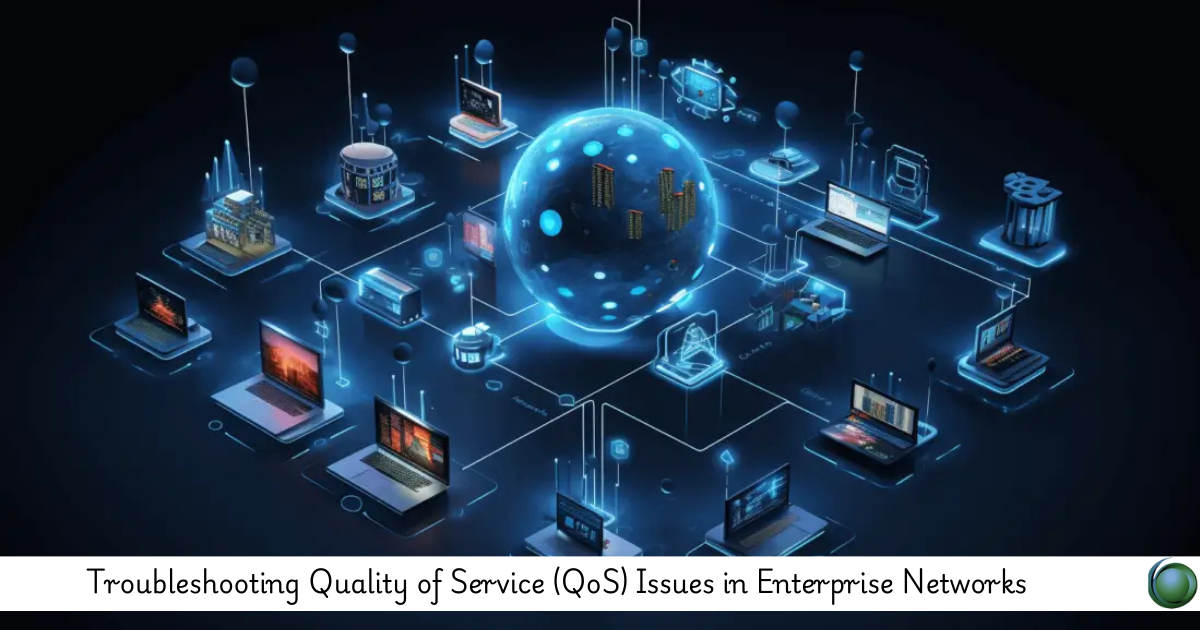Description
Introduction of QoS Troubleshooting
Quality of Service (QoS) is a critical component for ensuring that network traffic is efficiently managed and prioritized in enterprise environments. However, when QoS configurations don’t perform as expected, it can lead to network slowdowns, packet loss, and poor performance of critical applications like voice and video. Troubleshooting QoS issues requires a structured approach to identify and resolve problems that impact the delivery of high-priority traffic. This guide provides the tools, techniques, and best practices for diagnosing and fixing QoS-related problems in enterprise networks.
Prerequisites
- Basic understanding of networking concepts, including IP addressing, routing, and switching.
- Familiarity with QoS concepts such as traffic classification, marking, policing, and queuing.
- Experience with Cisco or similar networking devices and operating systems.
- Knowledge of network monitoring and diagnostic tools like Ping, Traceroute, and SNMP.
Table of Contents
1. Introduction to QoS Troubleshooting
1.1 Importance of QoS in Enterprise Networks
1.2 Common QoS Issues in Network Performance
1.3 Steps in Troubleshooting QoS Problems
2. Identifying QoS-Related Performance Issues
2.1 Symptoms of QoS Problems: Latency, Packet Loss, and Jitter
2.2 Tools for Monitoring QoS Performance
2.3 Identifying Bottlenecks and Congestion Points
3. Traffic Classification and Marking Issues
3.1 Incorrect Traffic Classification and Its Impact
3.2 Verifying and Troubleshooting DSCP and IP Precedence Marking
3.3 Tools for Verifying Traffic Classification and Marking
4. Queuing Issues and Traffic Scheduling Problems
4.1 Common Queuing Problems: Starvation and Inconsistent Prioritization
4.2 Troubleshooting FIFO, WFQ, and Priority Queuing Mechanisms
4.3 Verifying Queue Configurations on Routers and Switches
5. Traffic Policing and Shaping Misconfigurations
5.1 Impact of Incorrect Traffic Policing on Network Performance
5.2 Identifying Over-Policing or Under-Policing Issues
5.3 Troubleshooting Traffic Shaping Configurations
6. Misconfigured QoS Policies Across Devices
6.1 Impact of Inconsistent QoS Policies in Enterprise Networks
6.2 Ensuring End-to-End QoS Policy Consistency(Ref: Quality of Service (QoS) for Voice and Video Traffic: Ensuring Quality Communication)
6.3 Troubleshooting QoS Misconfiguration Between Routers and Switches
7. Advanced Troubleshooting Techniques
7.1 Using Network Analyzers and Protocol Analyzers for QoS Troubleshooting
7.2 Analyzing Packet Traces for QoS Issues
7.3 Using SNMP to Monitor and Identify QoS Failures
8. Voice and Video Applications
8.1 Diagnosing Latency and Jitter in VoIP and Video Conferencing
8.2 Prioritizing Voice and Video Traffic Over Other Data Traffic
8.3 Troubleshooting SIP and RTP in QoS Configurations
9. Case Studies
9.1 Real-World Examples of QoS Problems and Solutions
9.2 Best Practices for Preventing Future QoS Issues
9.3 Step-by-Step Walkthrough of Common Troubleshooting Scenarios
10. Conclusion and Best Practices
10.1 Summary of Key Troubleshooting Techniques
10.2 Best Practices for Maintaining QoS in Enterprise Networks
10.3 Preparing for Future Network Demands and QoS Challenges
This course issues in enterprise networks requires a methodical approach, leveraging both diagnostic tools and a solid understanding of QoS principles. By identifying symptoms, analyzing traffic patterns, and examining configurations on routers, switches, and end devices, network administrators can effectively resolve performance issues and ensure that critical applications receive the necessary network resources. This guide provided an in-depth overview of common QoS problems and troubleshooting techniques, as well as best practices to help maintain optimal performance in high-priority services like voice and video. With these strategies, you can confidently troubleshoot and optimize your enterprise network’s QoS performance.







Reviews
There are no reviews yet.